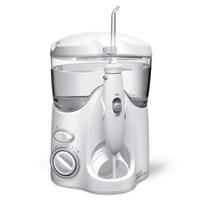Cleaning & Flossing Dental Braces
Dental braces can create oral health problems such as gingivitis and decalcification (white marks), which lead to more serious issues.
- Gingivitis is the earliest sign of gum disease. It appears as red, swollen, and shiny gums that bleed easily. It is caused by plaque that irritates the gum tissue and causes an infection.
- Decalcification affects your tooth enamel, causing white spots or lesions on your teeth. It is caused by a combination of plaque and acid production after you eat and drink. Decalcification is impossible to correct, so prevention is critical.
You can minimize or prevent oral health problems caused by dental braces with good dental and orthodontic care.



Brush Your Teeth and Floss Every Day
Remove Plaque
To clean your braces and teeth thoroughly and remove plaque, you should brush around all parts of your dental braces and all of the surfaces of your teeth. Ideally, you should brush after every meal or snack. If you can’t brush right away, rinse your mouth well with water.
Use a Sonic Toothbrush
A manual toothbrush works well if you use it correctly. But when you have brackets, wires, and other hardware in your mouth, you may find it easier to use a sonic toothbrush. Watch your toothbrush head for wear. Due to the brackets and other hardware, you will need to replace the brush head more often.
Floss Every Day
Even a sonic toothbrush can't remove all of the plaque. You also need to floss to remove the plaque that your toothbrush cannot reach. A floss threader is one method for flossing with braces, but it can be difficult and time consuming.
How To Floss With Braces
Water Flossing
An easy and effective way to clean and floss braces and improve gum health is to use a WATERPIK water flosser with the Orthodontic tip. It is clinically proven more effective than dental floss for people with braces. Learn more about how to floss with braces using a WATERPIK water flosser.
Orthodontic Tip
The Orthodontic tip is designed with a tapered brush on the end to help remove plaque that sticks to the brackets and between your teeth. It also helps flush out the bacteria and food debris from around teeth and under the gums.
Other Tips for Dental Braces Care
Using fluoridated toothpaste or adding a fluoride rinse to your routine can help prevent white spots (decalcification) and decay. It's also important to continue your regular dental check-ups during orthodontic treatment.
